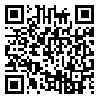Volume 5, Issue 1 And 2 (3-2012)
IJMEHM 2012, 5(1 And 2): 70-111 |
Back to browse issues page
Download citation:
BibTeX | RIS | EndNote | Medlars | ProCite | Reference Manager | RefWorks
Send citation to:



BibTeX | RIS | EndNote | Medlars | ProCite | Reference Manager | RefWorks
Send citation to:
Mobasher M, Sasani P, Al-e-Davood S J, Aramesh K, Larijani B. Revision of the guideline for ethical use of animals. IJMEHM 2012; 5 (1 and 2) :70-111
URL: http://ijme.tums.ac.ir/article-1-135-en.html
URL: http://ijme.tums.ac.ir/article-1-135-en.html
1- Medical Ethics and History of Medicine Research Center, Tehran University of Medical Sciences, Tehran, Iran
2- Veterinary Department, Tehran University of Medical Sciences, Tehran, Iran
2- Veterinary Department, Tehran University of Medical Sciences, Tehran, Iran
Abstract: (12611 Views)
Although we have diverse methods in laboratory studies, such as cellular and molecular sciences, understanding many issues related to human health requires research on animals. An ethical duty of every researcher is to respect animal rights. In our country, educational and research activities are carried out frequently on animals. Therefore, guidelines for ethical use of animals in Iran were developed in 2004 after a review of international resources and considering the needs of researchers working with animals. This guideline was written in four sections, including animal transportation, facilities, animal care personnel, and research users. However, some studies show that researchers need comprehensive and easy to use instructions on the ethical use of laboratory animals. On the other hand, inadequate knowledge about ethics principles in research on laboratory animals have revealed the need to update guideline to be more practical, applicable, and in line with researchers' requirements. In this study, the above mentioned guideline was revised and completed in five parts, including transportation, facilities, animal care personnel, research users, and the use of animals in experimental procedures. In the first section, points on transport of animals and facilities, including location, cage, ventilation, humidity, light, temperature, noise, water and food are presented. The new revision, contains additional paragraphs, and some previous paragraphs are split. Another part of the findings is presented in terms of fundamental duties and ethical performance of persons who work in laboratory animals' houses and researchers working with animals. The final section of the findings is related to the use of animals in laboratory processes which are not presented in the previous formulation of the guideline, and includes basic ethical issues in regard to categorizing, anesthesia, surgery, and euthanasia. Therefore, the guideline was revised to be much more practical, more applicable, and should lead to some form of researchers' training in this field.
Type of Study: Research |
Accepted: 2013/06/9 | Published: 2013/09/22
Accepted: 2013/06/9 | Published: 2013/09/22
Send email to the article author
| Rights and permissions | |
 |
This work is licensed under a Creative Commons Attribution-NonCommercial 4.0 International License. |





